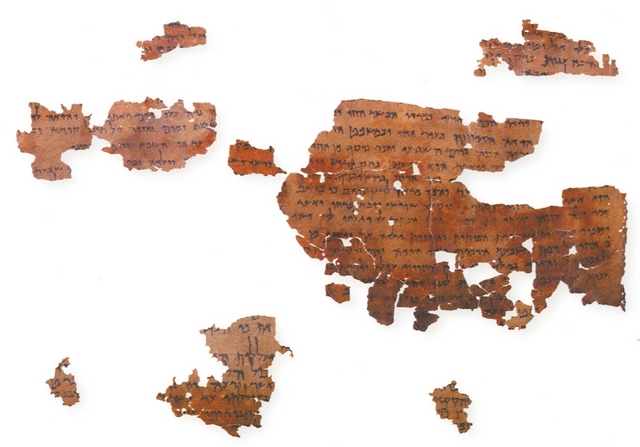Damascus Document, 1st century BCE
The Damascus Document circulated widely in the Qumran community, as evidenced by the number of fragments of the text found in caves 4, 5 and 6. The contents of these Qumran fragments are also found in two medieval manuscripts discovered by Solomon Schechter in 1896 in the genizah in the Ezra Synagogue in Old Cairo. The manuscripts from Egypt are often also called the “Cairo Document.” The text of these documents describes a community which fled from Judea to Damascus.
The Damascus Document contains two major parts- a hortatory section and a legal section. The first part exhorts the congregation to remain faithful to the new covenantal community established in the “Land of Damascus.” Scholarly opinion is divided about the meaning of “Damascus,” which could either refer to the Syrian city, or symbolize a place of exile. The legal section lists the statutes and rules for life in the community, and the regulations for the rituals, purification rites, and worship of the community.
Paleographically, this fragment is the earliest of the eight fragments of the Damascus Document uncovered in Cave 4, and can be dated to the late first century BCE.
See also-
What do you want to know?
Ask our AI widget and get answers from this website
